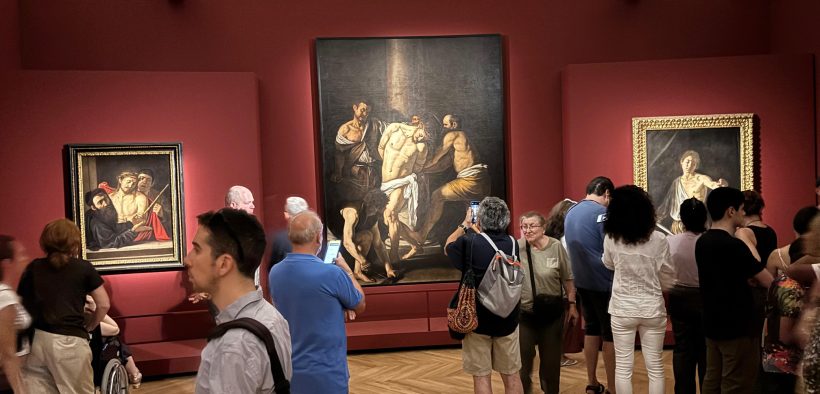A Summer Invitation: Caravaggio in Rome for the Jubilee Year
Share

Rome is currently hosting one of its most popular exhibitions of the year: Caravaggio 2025. Organized in celebration of the Jubilee Year proclaimed by Pope Francis, the show brings together a remarkable collection of masterpieces by the artist whose most turbulent and creatively prolific years were spent in the Eternal City. The exhibition also coincides with the 415th anniversary of Caravaggio’s death, commemorated on July 18.
Since March 7, four grand rooms on the ground floor of the elegant Palazzo Barberini have been filled with some of Michelangelo Merisi’s most iconic works. Known to the world simply as Caravaggio, the artist’s dramatic style and revolutionary use of light and shadow are on full display.
Curated by Francesca Cappelletti, Maria Cristina Terzaghi, and Thomas Clement Salomon, the exhibition is described by organizers as one of the most ambitious projects ever dedicated to Caravaggio’s work. It features nearly 30 authenticated paintings and leads visitors through rarely seen pieces and discoveries, all within a venue that once served as a key setting in the painter’s relationship with his patrons.
The works on display focus on the later years of Caravaggio’s life and career. Active between 1571 and 1610, the artist’s final decade is widely regarded as his most productive. The first gallery alone—featuring Narcissus, Young Sick Bacchus, and The Conversion of Saint Paul—invites visitors to linger and immerse themselves in the depth and drama of each painting.
Among the highlights are pieces not usually seen together or even in Rome. One standout is the Portrait of Maffeo Barberini, which was presented to the public after more than sixty years and is now exhibited alongside such masterpieces as Martha and Mary Magdalene, Judith Beheading Holofernes, and Saint Catherine of Alexandria.
That last painting, Saint Catherine, is often cited as a turning point in Caravaggio’s work—a moment when his bold contrasts between light and darkness began to define not only his technique but his artistic identity.
A particularly fascinating detail: the same model—Filide Melandroni, a well-known courtesan of the time—posed for all three of the works mentioned above: Mary Magdalene, Judith, and Saint Catherine. This was typical of Caravaggio, who often found his models among the working-class people he encountered near his home around Piazza Navona. For the first time, the first two of these paintings are now being shown side by side.
One of the exhibition’s biggest draws is the rare opportunity to see Martha and Mary Magdalene, on loan from the Detroit Institute of Arts. Also on display is Ecce Homo, brought in from Madrid’s Prado Museum, and Saint Catherine from the nearby Museo Thyssen-Bornemisza. This artwork, once part of the Barberini collection, now returns to the very palace where it was initially displayed.
Originally scheduled to close in early July, the exhibition has been extended until July 20 due to overwhelming public interest.
For Caravaggio enthusiasts who may not be able to attend in person, Rome still offers numerous opportunities to encounter the artist’s genius. His paintings can be admired throughout the city—in the Church of San Luigi dei Francesi, where the Saint Matthew triptych is housed; in Santa Maria del Popolo on Piazza del Popolo, which features both The Crucifixion of Saint Peter and The Conversion of Saint Paul; and in the Borghese Gallery, home to several other iconic works.
For art lovers and pilgrims alike, a stop in Rome during the Jubilee Year would be incomplete without encountering Caravaggio. His paintings continue to offer not only aesthetic wonder but also profound spiritual resonance, rooted in the sacred themes that have shaped much of his work.
—Family News Service







